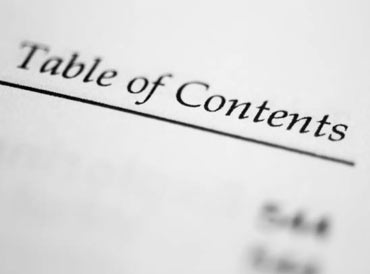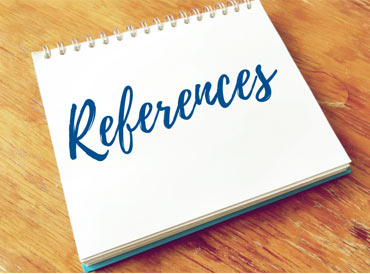Writing complex business reports as opposed to simple academic writing like essays, assignments, and articles might be terrifying, specifically for students. Almost every line of work requires some sort of business report. These documents, which are based on facts, are utilized by businesses to make decisions. You can utilize business reports for a variety of things, including pitching, assessing, and showing that your firm conforms to social and legal requirements, as well as any specialized topic linked to your career and area of work.
Moreover, as part of their studies, and typically as a piece of graded work, students are likely to be required to prepare a business report. These reports use a much more systematic approach than an essay would. A well-structured business report gets you A + grades. For professional assistance, students can consider taking business case study writing services from the experts so that they can effortlessly score A + grades.
What Is A Business Report?
An official document that includes factual information, statistical data, research findings, or any other type of material pertinent to the duties of the position is referred to as a business report. This report is a formal document that is short and to the point in order to convey information. You must analyze an issue for business reports and then offer a resolution or recommendations for improvement.
Formally organized, they have divisions and headings. Regarding portions, reports differ from one another. This is why you should always check your assignment instructions or directly question your instructor about which sections are necessary.
It may not be appropriate to provide information in a linear paragraph style in reports because they tend to be as concise as possible; instead, you may need to utilize tables, numbered or bulleted lists, or both. However, although this varies depending on your class and professor, it is generally recommended that you utilize entire, grammatically correct sentences as opposed to abbreviated snippets in a bullet point format. It is highly advised that you get in touch with experienced professionals so that they can assist you and guide you on what the correct business report structure is and how you can create the best business report for A + grades.
The Best Business Report Structure For A+ Grades

Before you start writing a business report, make sure you have a clear understanding of why you are creating the report and who will be reading it before you start your research. Make a plan for the data you will need to use and how you will gather it. You could, for instance, use sales data or site analytics. You might also wish to organize focus groups or product planning workshops if you’re reporting on the viability of a new good or service. Analyze the raw data that your investigation has revealed after that. Your report ought to have the authority of a cogent argument and strong conclusions because you’ll probably need to make suggestions to top managers. Decide what information belongs in your report. Find a balance. Keep track of every piece of information you utilize.
Let’s have a look at the business report structure that helps students score A + grades:
Title Page
The title page should be included in every business report. The report’s topic should be made abundantly clear in the title. Normally, you should additionally mention your name and the report’s date. The topic of the business report is made clear in the title. Include a brief statement of the report’s goal. A table of contents could be included in your title section if your report is lengthy (more than, say, ten pages).
Executive Summary
An overview of the report’s main points can be found in the executive summary. It contains details about how you finished the report and the key conclusions. The main conclusions and suggestions are also included. For shorter business reports, the executive summary can be a paragraph or two long. However, if it’s one of those intricate business reports, you might have to lengthen them. Those who lack time to read the complete report can benefit from the executive summary. It guarantees that they will just need to read the primary report.
Keep it to no more than one page so that it may be quickly read. Describe the problem in detail before listing the most crucial data or findings. Finally, describe in full the steps you believe should be taken. Make sure it can stand alone because many people will only read this one page. To highlight and enumerate the key elements, use bullet points and numbered lists. This can surely make you able to score good grades.
Table of Contents

A table of contents is not required for shorter reports, but it is required for longer reports to list the contents of the business report. It includes a list of page numbers and numbered headings. The table of contents information must correspond to the report’s content sections. A table of contents leaves a good impression on the instructor, and this can make you score an A + on your business report.
Introduction
Your report is finally underway. Include a brief summary of the primary argument and the report’s goal on this page. The first significant section of a business report is the introduction. This part explains what the reader can expect from the remaining portions of the document. Background information like company history and market data are included in the introduction. It also describes the purpose of the report and its parameters.
This actually frames the rest of your business report structure & theme by providing:
- Information on the setting (e.g., business history or market information)
- The report’s objective and purpose (i.e., what you set out to achieve)
- The scope of your report (i.e., what it will cover and what it will exclude)
The “terms of reference” for the business report are referred to as this.
Methodology
Tell the readers how you produced this report on this page. It covers information sources, data types (qualitative or quantitative), information delivery channels, etc. This is done to give your readers a better understanding of the steps you took, or, to use urban parlance, the BTS of the report. Your report gains credibility as a result.
Include a section about your methodology if you’re undertaking original research. It can only be a matter of listing your sources and explaining your decision to use them. However, it might also cover the methods you used to gather and examine the information that you utilized to make your judgments.
Findings
The data gathered from the research techniques form the basis of the report’s conclusions. The principal issues the study seeks to resolve must be addressed in these conclusions. The results are what persuade the readers that your project is relevant. Graphs and illustrations are welcome as additional components. The findings of your study will be presented in this section in a clear, concise way, covering all the major issues outlined in brief.
Conclusions & Recommendations
Your report’s final major part will include findings and suggestions. What you should have learned from the report should be summed up in the conclusion section. You should also suggest potential actions based on your findings if you have been asked to do so. The conclusion needs to be compelling and supported by factual information rather than prejudicial viewpoints or beliefs. The advice is primarily based on the assignment’s instructions from the teacher. However, if there isn’t one, one should be established based on the project’s goals. If you’re unsure of what to propose in this situation, consider your brief’s objectives once more. Make sure to conclude in a well-structured and formalized way so that you can get an A + on your business report.
References

You must list all the outside sources you consulted while producing your report in the reference section. If you used any of the scholarly journals, other business documents, or news items for the report, they would be some of the details to provide.
Appendices
Additionally, you might have obtained marketing materials, interview transcripts, or financial information throughout your study. You can add this to an appendix (or several appendices) at the end of the report instead of including it in the main report because it would make it excessively long and unfocused. Then it will be accessible in case your reader needs it. Maps, questionnaires, notes, and data summaries are a few of the elements to add as appendices.
Final Words
The first step in completing the remaining task is to comprehend the business report’s format. The research, writing, and presentation are still on your plate. Since all of this study requires a lot of time, you might have to give up some other facets of your academic life. No, not unless you hire a qualified business report writer. There are many professional writing services available that students can consider in order to obtain A+ grades. To make sure you always get what you need, when you need it, only hire the experts.

